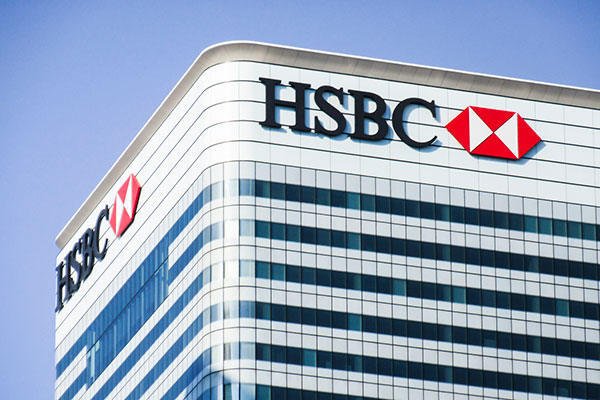HSBC fails to excite with these first quarter results
26th April 2022 08:09
by Richard Hunter from interactive investor
They say elephants don’t gallop, and this is evident in these latest numbers from one of the world's largest banks. Our head of markets makes sense of its Q1 figures.

HSBC Holdings (LSE:HSBA)has opened the UK bank sector first-quarter reporting season in unspectacular fashion, with the return of loss provisions an unfortunate highlight.
Although largely expected, the news that credit impairment provisions are back is the major drag on profits. In the corresponding quarter last year and after the effects of the pandemic had been less severe than forecast, HSBC released $435 million of impairments. This year the bank has taken a charge of $642 million, with this $1 billion swing being the major factor for lower profits. The charge largely relates to deteriorating economic situations in both Russia and China, with general inflationary pressures leading the bank to caution on the likelihood of defaults.
There are other patches of disappointment within the numbers, which led to the share price drifting in Asian trade, such as a revenue reduction in the wealth and personal banking unit.
- Insider: two FTSE 250 stocks tipped to recover
- Stockwatch: a software share in a sweet spot
- The Week Ahead: Lloyds Bank, Sainsbury’s, AstraZeneca, Persimmon
Of particular note, however, was the CET1 ratio, which fell sharply from the previous quarter’s level of 15.8% to 14.1% due to regulatory changes and market movements. In terms of outlook, the bank has cautioned that the pressure on the capital cushion may mean that no further share buybacks will be possible this year. Aside from the currently attractive dividend yield of 3.9%, the removal of the possibility for further shareholder returns may also weigh on sentiment.
Despite the decline in net profit for the quarter, there are also some areas of progress which mitigate some of the disappointment from the numbers. The profit number itself was ahead of expectations, while a continuing focus on cost reductions (despite more investment in technology) left the cost/income ratio largely flat year-on-year, and significantly improved quarter-on-quarter. Adjusted operating expenses overall fell by 2%.
The rising interest rate environment has also been a boon for the banks, and there are some early, if incremental, signs of improvement to the Net Interest Income and Net Interest Margin figures. Elsewhere, a strong improvement in lending growth also augurs well for the immediate future, and the bank expects a Return on Tangible Equity in excess of 10% before the year is out, partly boosted by the removal of restrictions in the Asian region.
In addition, there are signs that some of the limiting factors within the results could be more temporary in nature, which could encourage investors to look through the numbers to consider the wider picture as the year unfolds.
- Ian Cowie: my first 10-bagger is offering an eye-catching discount
- Find out what is now being tipped to be the best investment of 2022
- How I’m positioning my investments this tax year
Overall, the group has been hampered by and inevitably subject to wider geopolitical and economic pressures. Given the sheer size and scale of the bank, the old market adage that elephants don’t gallop is reflective of the measured but uninspiring progress.
Even so, the numbers follow a strong performance of late, with the share price having risen by 20% over the last year, as compared to a gain of 6% for the wider FTSE100.
With the interest rate environment playing into the hands of the banks, the market consensus for prospects remains positive, with the general view being that HSBC remains a "buy for the longer term".
These articles are provided for information purposes only. Occasionally, an opinion about whether to buy or sell a specific investment may be provided by third parties. The content is not intended to be a personal recommendation to buy or sell any financial instrument or product, or to adopt any investment strategy as it is not provided based on an assessment of your investing knowledge and experience, your financial situation or your investment objectives. The value of your investments, and the income derived from them, may go down as well as up. You may not get back all the money that you invest. The investments referred to in this article may not be suitable for all investors, and if in doubt, an investor should seek advice from a qualified investment adviser.
Full performance can be found on the company or index summary page on the interactive investor website. Simply click on the company's or index name highlighted in the article.